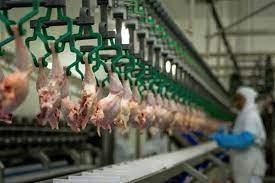 According to USDA-FAS GAIN report BR2021-0033 released on September 2nd, Brazil will increase broiler output in 2022 by 2.6 percent to attain 14.72 million metric tons. Of this total, 28.4 percent, comprising 4.18 million metric tons will be exported. Exports will increase by 3.0 percent in 2022 over the current year. Based on a population of 215 million, per capita consumption in Brazil will attain 108 lbs. Chicken is the most popular domestic animal protein representing 51 percent of consumption, followed by beef at 34 percent and pork at 15 percent.
According to USDA-FAS GAIN report BR2021-0033 released on September 2nd, Brazil will increase broiler output in 2022 by 2.6 percent to attain 14.72 million metric tons. Of this total, 28.4 percent, comprising 4.18 million metric tons will be exported. Exports will increase by 3.0 percent in 2022 over the current year. Based on a population of 215 million, per capita consumption in Brazil will attain 108 lbs. Chicken is the most popular domestic animal protein representing 51 percent of consumption, followed by beef at 34 percent and pork at 15 percent.
Gross domestic product in Brazil contracted 4.1 percent in 2020 but will show 5.3 percent growth in 2021 although COVID has not been controlled. Consumer demand has been buttressed by support payments ("corona voucher") initiated in April 2020 but scheduled to be cancelled in October 2021. Inflation that exceeded 7.0 percent in 2021 is forecast to decline to 3.9 percent in 2022 although official unemployment is close to 15 percent.

Exports by Brazil in 2021 increased by five percent over 2020 but the rate will decline in 2022 to three percent but still maintaining dominance of Brazil as the largest chicken exporter followed in descending order by the U.S. and the E.U., Thailand and Turkey. Exports are favored by the relatively favorable exchange rate of the Brazilian Real to the U.S. dollar. At the end of 2019, the exchange rate was R$4.0 compared to the current value of R$5.4. Freedom from avian influenza has been a major advantage for producers in Brazil.
China is the largest importer of chicken products from Brazil with 15 percent of volume. The second largest importer is Saudi Arabia with 10 percent of exports followed by Japan, 9.5 percent; South Africa, 7.3 percent and the UAE, 7.3 percent.
Exports to Saudi Arabia are in question given the decertification of eleven processing plants in Brazil during early May, an apparently erratic decision based on halal certification. During the same month, the Saudi government requested the World Trade Organization to impose an expiration deadline on frozen chicken of three months, down from the accepted one-year duration. This decision was blatantly protectionist and was justifiably reversed on appeal. Brazil intends to develop new markets predominantly in nations that demand strict halal certification including Indonesia and Malaysia.
Export activities are supported by the Brazilian Agency for Promotion of Exports and Investments with support provided by agricultural and commercial counselors in embassies. It is considered significant that Mexico has been targeted for exports with 71,000 tons shipped during the first half of 2021, a nine-fold increase over the corresponding six months of 2020. The June 2021 announcement of the 30,000-ton chicken import quota will obviously benefit Brazil.
The broiler industry in Brazil is currently operating with increased costs due to an escalation in feed related to drought. Other variable cost components include chicks, labor, utilities and transport. The FAS Post estimated live-bird production to be 45.4 cents per pound with 76 percent of this cost represented by feed, 13 percent day-old chicks, 3.8 percent labor, 3.6 percent fixed costs and 1.3 percent utilities. In July, soybean meal was $411 per short ton and corn $279 per short ton, corresponding to $7.80 per bushel. Retail prices for chicken products in Parana State ranged from 77 cents per pound for frozen whole birds to $1.05 for bone-in thighs and drumsticks but with breast slightly lower.